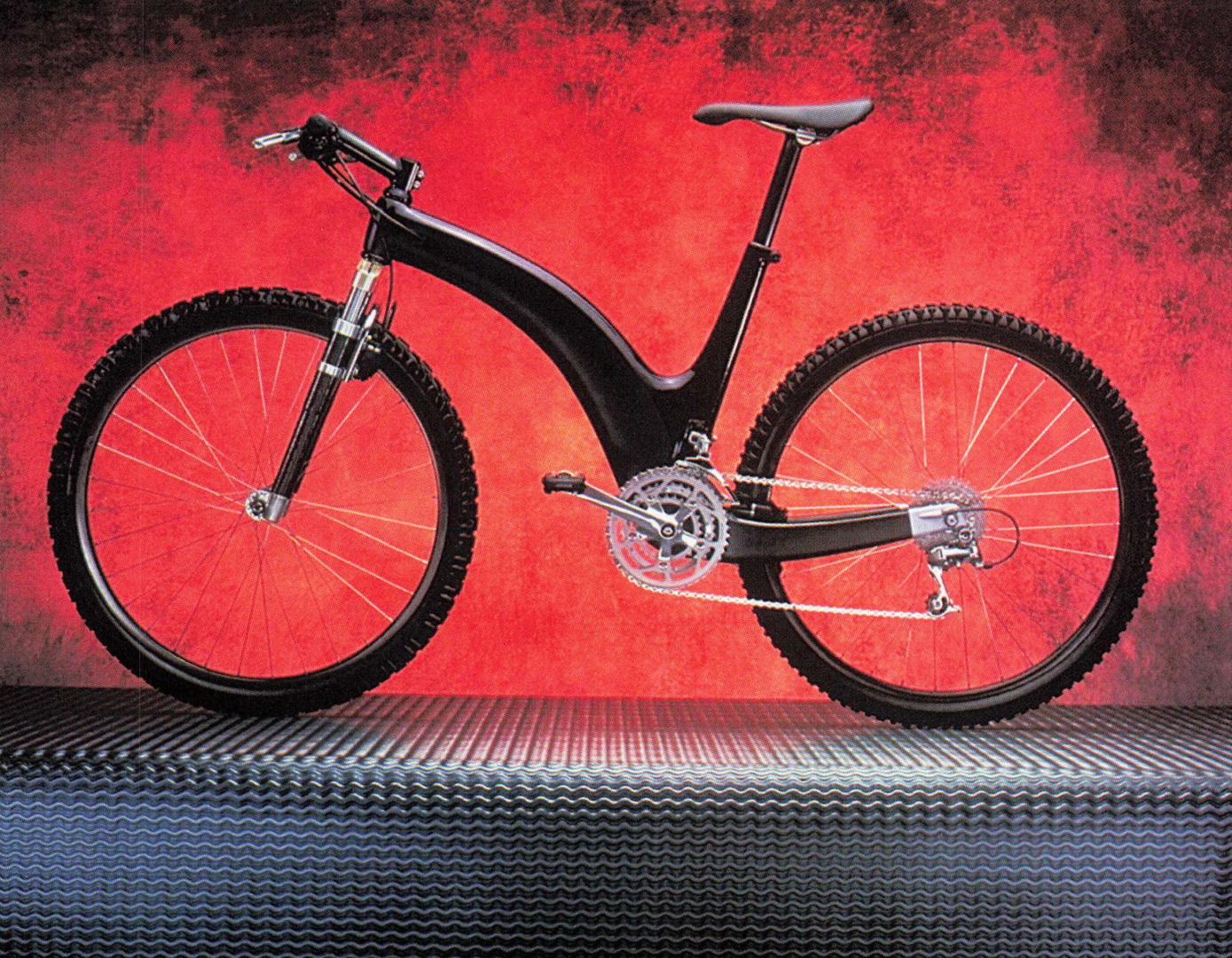“CompositAir Mountain Bike Project” by Ivie and Cook
Conference:
Experience Type(s):
Entry Number: 04
Title:
- CompositAir Mountain Bike Project
Program Title:
- Designing Technology
Organizer(s)/Presenter(s):
Collaborator(s):
Project Affiliation:
- Designworks/USA and SP Systems
Description:
Carbon-fiber Mountain Bike Frame: A Design Study in Technology and Human Interface
SP Systems, a Camarillo, CA based composites manufacturing company, contacted Designworks/USAto develop a new application for their carbon-fiber production capability. Due to advancing technology in these materials, and an inherent interest in sports ,a product for the bicycle industry was targeted.
This turned out to be a fortuitous choice for both CompositAir and Designworks/USA. The project designers at Designworks/USA and the key engineer at CompositAir were avid mountain bikers, and a synergy quickly developed.
An early consideration for the assignment revolved around the development schedule target for introduction at a major trade show. To be able to work within the compressed deadline required considerable planning on Designworks/USA’s part to determine the combination of resources needed to execute the project.
Designworks/USA has taken the position through the years of the importance of developing a product’s form in 3D, i.e., what we would call traditional industrial design. This would seem to be at odds with the current thinking for design execution being done by computer through the systems such as Alias, ProEngineer, and other development software. The bike frame project appeared to be an ideal candidate for this combination of leading-edge technology and hands-on form development. The philosophy used on this project centered on using both computer-generated surface development and an extensive evolution of 3D modeling. It was felt that the combination of a designer’s feel for form and a computer’s delivery of exact data for further development would result in the best all-around package.
After a series of design sketches evolving the concept from rough ideas to full-size layouts, several soft foam models were produced to understand and evaluate the emerging complex structure. These models proved very useful for the client’s production team. They were able to suggest numerous subtle refinements that helped visualize the molding techniques and identify potential problems they were likely to encounter later.
Integrated with the model development, the basic structure and form was programmed into the Evans & Sutherland CDRS surface development system. As details evolved in the complex form, CDRS allowed both designers and engineers to judge the impact on other areas of the structure. The software’s ability to quickly produce photo-realistic illustrations, create sections and joining details, and project multiple variations saved many person hours and gave the client options not previously considered. This exchange of ideas and refinement through solid and realistic modeling and computerized images allowed to project to move ahead with confidence. Slowly but accurately the frame became reality.
The final step in this process was to verify in hard model form the completed design. Using data from CDRS, sample components in the frame could be fabricated by stereolithography, CNC milling, and other prototype techniques. At this point we had a true representation of the product and a clear buy-off of the design.
Under hard prototype testing during the summer and fall of 1992, the new concept proved to have greater torsional rigidity, overall strength, and durability plus more vertical shock absorption than any conventional aluminum, chrome moly steel, or composite frame on today’s market.
An enthusiastic client presented their concept to the market on time and within the marketing objectives. Critical review by industry has endorsed the concept, and from early award-winning publicity the bike appears to have met its basic goal of bringing together technology and human interface to an exciting new design.





